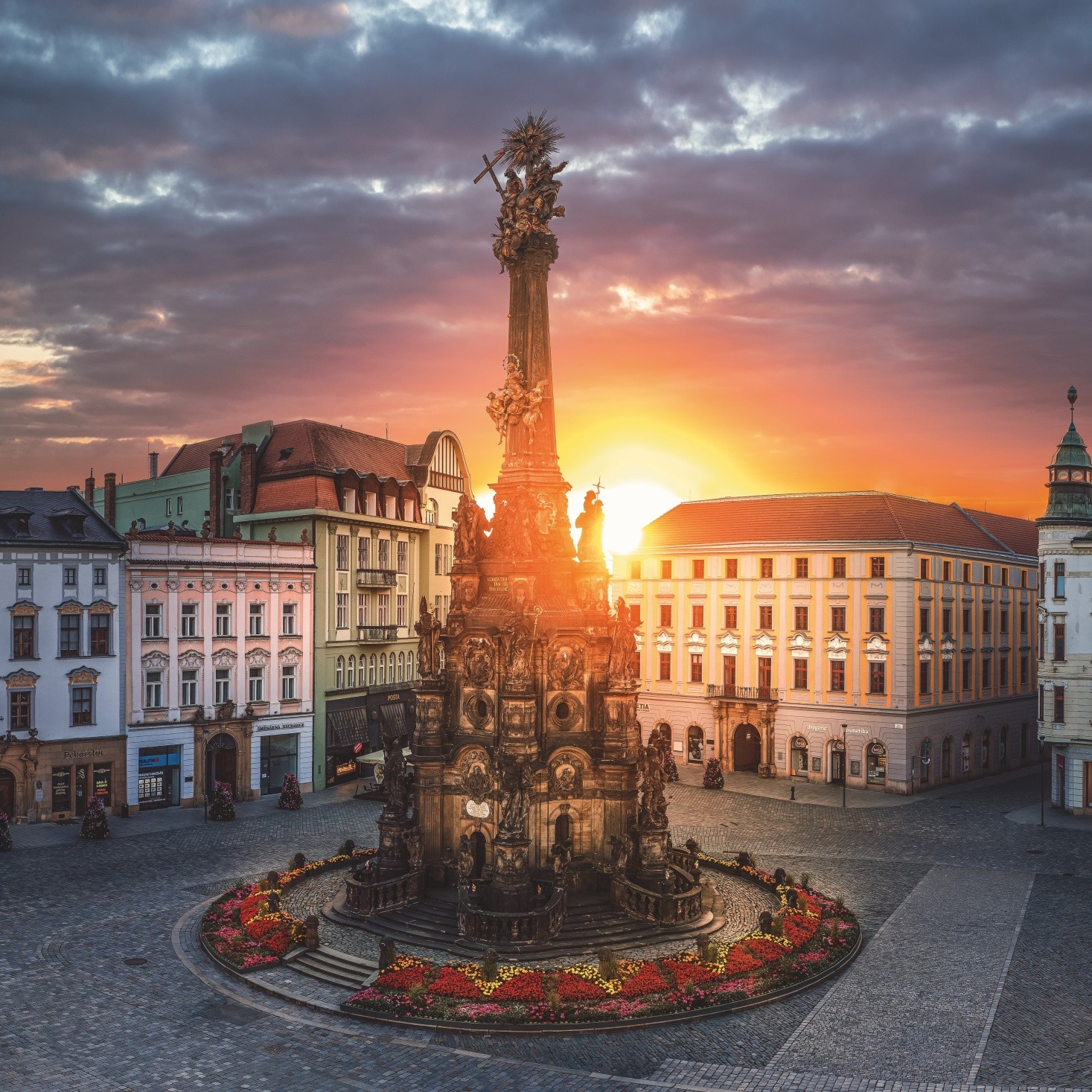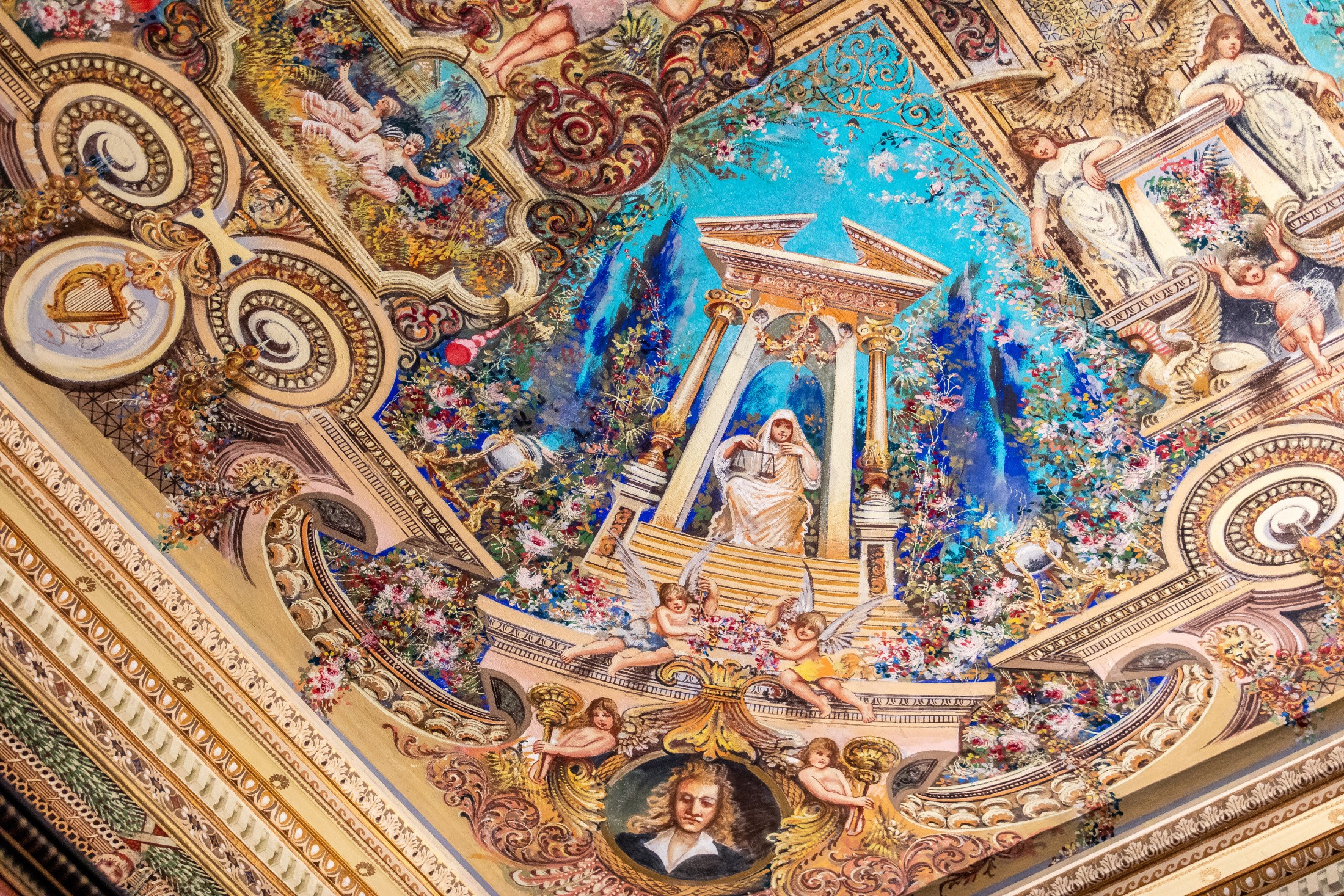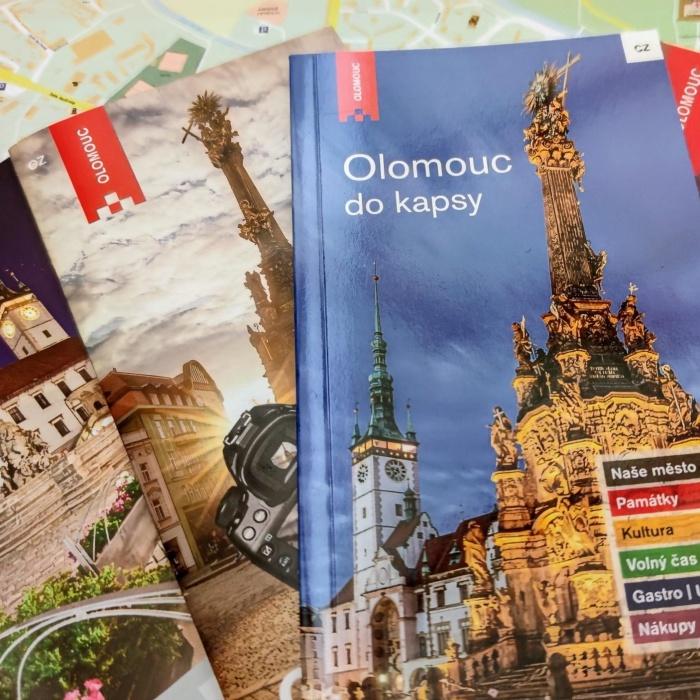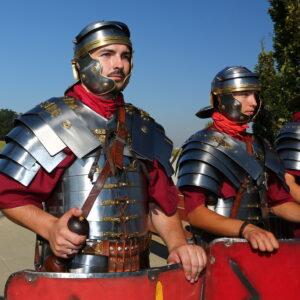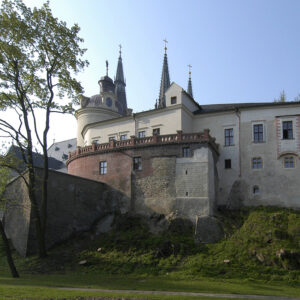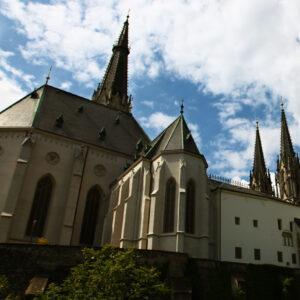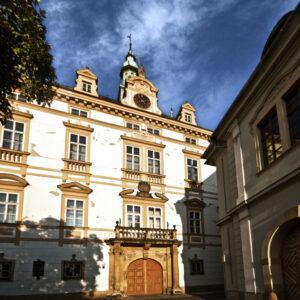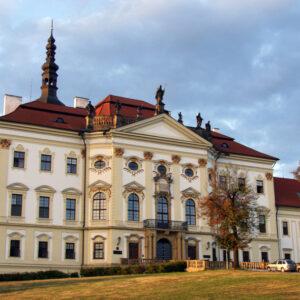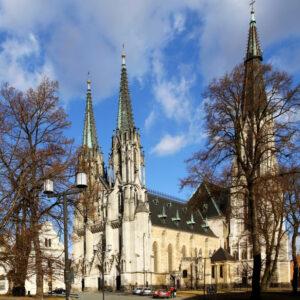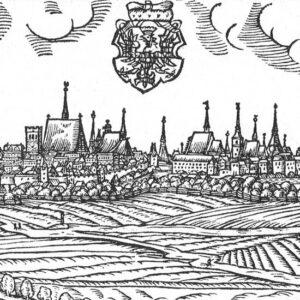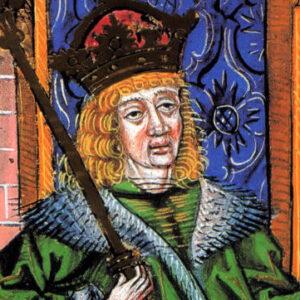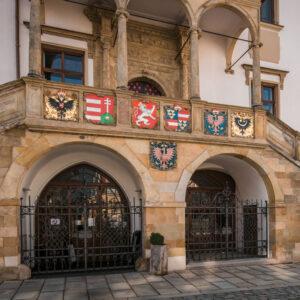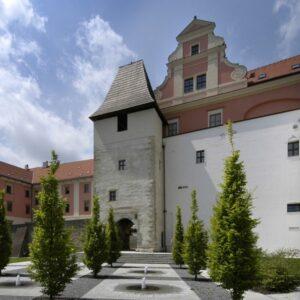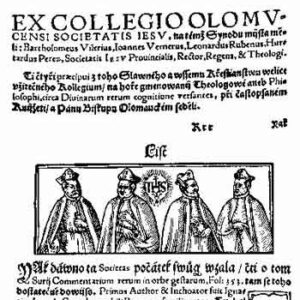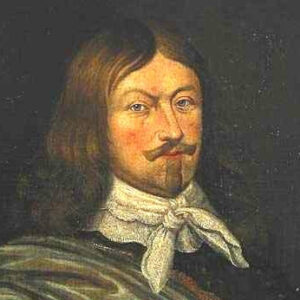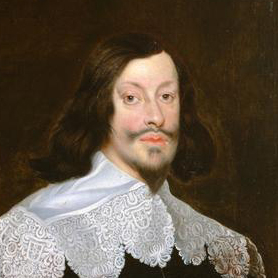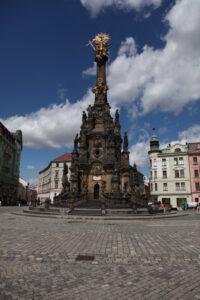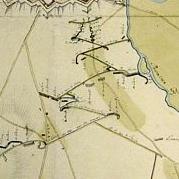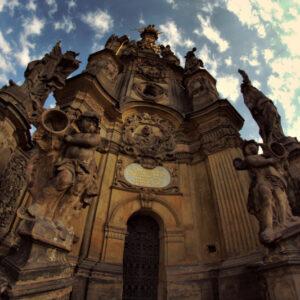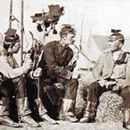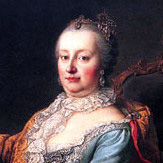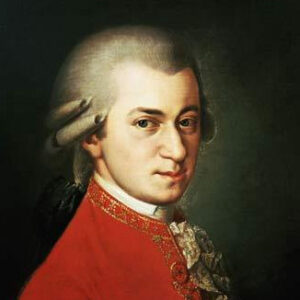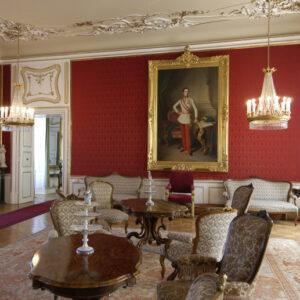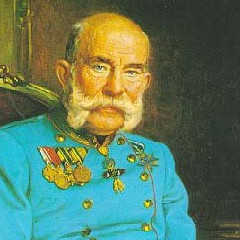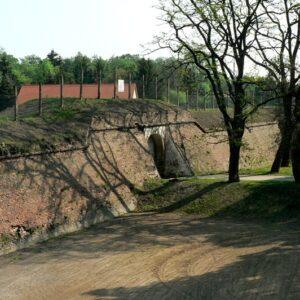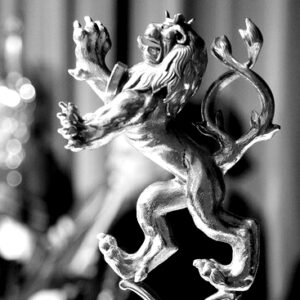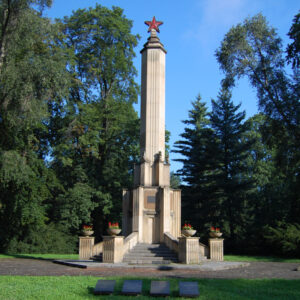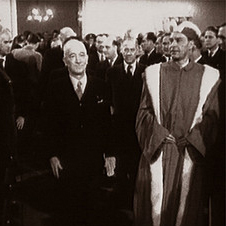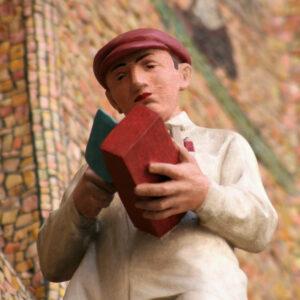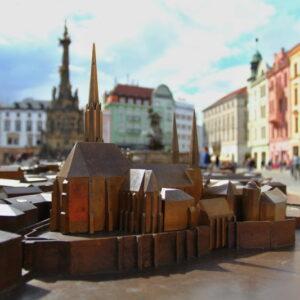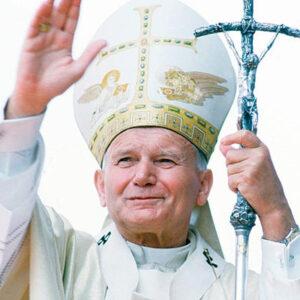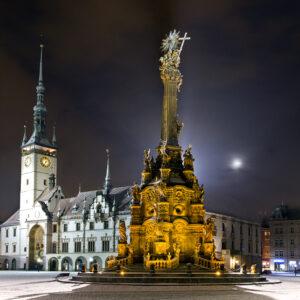History of the city in a nutshell
Olomouc, today’s metropolis of 100,000 inhabitants in the heart of Haná, has always been one of the most important cities of the Czech state. Its history began many centuries ago…
- already since the Early Stone Age the site of today’s Olomouc was chosen for the founding of villages, an important crossroads of roads, documented stay of Romans in Olomouc (temporary camp of Roman legions from the end of the 2nd century AD.
- already in the early Middle Ages one of the main centres of Moravia, a princely seat
- in the 11th century a bishopric was founded, in 1306 the last Czech ruler of the powerful Přemyslid family was murdered here (King Wenceslas III.)
- in 1573 the university was founded (the second oldest in the Czech lands)
- in the Renaissance period an exhibition seat with magnificent palaces and up to 10 thousand inhabitants, the capital of Moravia (the second largest city in the Czech lands after Prague)
- during the Thirty Years’ War devastating occupation by Swedish troops (1642-1650), during the siege the city was completely destroyed, the vast majority of the inhabitants either perished or moved away from the ruins of Olomouc
- a number of unique monuments, buildings and churches were built during the Baroque period (the Holy Trinity Column, a set of six Baroque fountains, the Church of St. Michael…)
- In 1767, eleven-year-old W. A. Mozart composed the 6th Baroque Baroque Symphony in Olomouc. Symphony in F major
- in Olomouc in 1848, Emperor Franz Joseph I took over the reign of the Habsburg monarchy for the next 68 years. In the 18th and 18th centuries, it was an important military centre of the Austrian monarchy, transforming the town into a Baroque fortress, then building more barracks and forts – outposts
- During World War II, about 2,000 Jewish inhabitants perished in concentration camps, after the war, the vast majority of Olomouc’s German population was displaced (before the war, one third of the city’s population)
- after the communist coup in 1948, the importance of Olomouc declined, and its historical heritage was neglected, construction of prefabricated housing estates
- after the Velvet Revolution in 1989, gradual reconstruction of the historical centre and monuments, construction of new sports grounds, recreational facilities, hotels, transport and tourist infrastructure
- in 2000 the monumental Holy Trinity Column was inscribed on the UNESCO World Heritage List
- the sixth largest city in the Czech Republic, the centre of the Olomouc Region, the seat of the Archbishopric of Olomouc and Palacký University
The oldest settlement
Romans in Olomouc
Románská Olomouc
Gotická Olomouc
Renesance a humanismus
Barokní Olomouc
Od 19. století po současnost
The oldest settlement
Man visited the area where the town of Olomouc is located tens of thousands of years ago. Archaeologists have discovered in their research that the ancestors of today’s Olomouc inhabitants can be traced back at least to the Stone Age. The fertile soil of the local landscape provided good conditions for agriculture. Later, it attracted the Celts and the Germans. But much better known is the residence of their enemies. In the second half of the second century AD, the Romans set up a marching camp in the town of Neředín. It served during the wars with the Germanic tribes of the Marcomanni. It is the northernmost evidence of Roman activity in the whole of Central Europe. The Olomouc site also enjoyed the favour of the powerful during the era of Great Moravia and in the following centuries. This was greatly aided by the important trade routes that led through the area.
Romans in Olomouc
The location of today’s Olomouc has always been of strategic importance. It was the crossroads of roads connecting the different parts of Moravia – south with north and east with west. The Romans also realised the importance of the place. It was probably for this reason that they built a marching or temporary camp here. Archaeologists discovered it in 2001 in Neředín. They explored part of the moat and fortifications on Roman and Slavic Streets. A Roman army unit controlled the surrounding area from here, including important communication arteries and a ford over the Morava River. Today, an original monument commemorates the stay of the Roman soldiers. It took the form of a Roman milestone – a building that lined the roads of the once mighty empire. It is located by the car park next to the non-renaissance cemeteries.
For more information, visit https://rimane.olomouc.eu.
Románská Olomouc
An important moment came for Olomouc in the first half of the eleventh century. Prince Oldřich annexed Moravia to the Bohemian Přemyslid state. Oldřich’s son Břetislav, the first Moravian prince, settled in Olomouc. The princely castle grew on the hill, later called Wenceslas Hill. It was first mentioned by the chronicler Kosmas in 1055. The castle became the centre of the newly founded Olomouc fief. However, this was far from being all there was to the territory of early medieval Olomouc.
In 1063, the Moravian bishopric was established here, fifteen years later the first independent monastery in Moravia. After several reconstructions, it has been preserved to this day, it is a monumental Monastery Castle. The office of Bishop of Olomouc was held between 1126 and 1150 by Jindřich Zdík, the alleged son of the chronicler Kosmas and above all a skilful politician and diplomat. He built the Romanesque St. Wenceslas Cathedral, where he transferred the bishopric from St. Peter’s Church on the opposite hill in 1141. In addition, he established a chapter in the vicinity of the cathedral and built a magnificent representative palace. Much of it has survived to the present day. Zdík’s palace from the first half of the twelfth century is one of the most important Romanesque residential buildings in Europe.
Gotická Olomouc
The origin of the royal city of Olomouc cannot be precisely determined due to the lack of a founding charter. Several monasteries of various religious orders grew up in the town, and the centre of trade moved from the forecourt to the newly built-up Upper and Lower Market Square (today’s Upper and Lower Square). Wenceslas’ successor Přemysl Otakar II then allowed Olomouc to build a merchant’s house. The oldest known imprint of the town seal dates from 1267. Even then, the town used a coat of arms with the motif of a chequered eagle. In the thirteenth century Olomouc was also fortified with walls. Together with its defenders, it resisted enemies for more than 350 years.
Bruno of Schauenburg was another of the many important bishops of Olomouc. This leading advisor to the two Přemyslid monarchs responded, among other things, to the cathedral’s extensive fire. He had it rebuilt in the then fashionable High Gothic style. On the fourth of August 1306, Olomouc made its mark on Czech history. In the house of the chapter dean Budislav of Belkovice, an unknown perpetrator ended the life of King Wenceslas III, putting the royal line of the Přemyslids to the sword.
During the Luxembourg era, Olomouc prospered thanks to a number of privileges. King John of Luxembourg and later the Moravian Margrave John Henry named it the capital of Moravia in their charters. In reality, however, it competed with Brno for this primacy. In 1378 Margrave Jošt allowed the Olomouc people to build a town hall. The townspeople of about 300 houses could then enjoy, for example, the right to brew and tap beer. During the Hussite Wars, Olomouc remained Catholic, loyal to Emperor Sigismund. Bishop Jan Železný of Olomouc was one of Luxemburg’s important allies. The city never fell into the hands of the Hussites.
After the middle of the fifteenth century, Jews were expelled from Olomouc, as from all Moravian towns. In 1469, the Catholic part of the Bohemian and Moravian nobility in the cathedral elected the Hungarian ruler Matthias Corvinus as King of Bohemia. He struggled for the Czech throne first with George of Poděbrady, then with Vladislav of Jagiellon. The disputes were only settled by a peace agreement negotiated in Olomouc in April 1479. The town also had to cope with large fires. On the other hand, it was enriched by the buildings of the town hall with the astronomical clock and the parish church of St. Moritz.
Renesance a humanismus
The Hussite wars stopped the economic development of the town, but by the end of the fifteenth century Olomouc was flourishing again. The walls grew by a new line with regard to the use of firearms. More interesting, however, is the boom in Renaissance architecture that occurred under Stanislav Thurz, bishop from 1497-1540. The educated ecclesiastical dignitary was among the supporters of the Olomouc humanist society Sodalitas Maierhofiana, which was founded in 1502. Another scholar associated with Olomouc, Štěpán Taurinus, first mentioned the Olomouc astronomical clock in his 1519 work. In the town, the medieval houses were gradually rebuilt, the nobility, the church and the townspeople were involved. The eastern facade of the town hall was decorated with a magnificent Renaissance portal and a staircase with a loggia.
But the Renaissance also brought religious disputes between Catholics and Protestants. In 1547, the printer Jan Olivetský was executed in Olomouc for printing “heretical” books. Six years later, non-Catholics again raided a Dominican monastery. Already in 1556 the Jesuit order came to Olomouc. On 22 December 1573, the second oldest university in the Czech lands began operating in Olomouc. It was founded after the existing Jesuit college received the necessary rights. Bishop Vilém Prusinovský, a supporter of the Jesuit order, contributed significantly to the foundation of the university. In the period before the Battle of White Mountain, Olomouc had eight thousand inhabitants living in 1200 houses. On the Morava River stood the second largest city in Bohemia. Only Prague was bigger.
Barokní Olomouc
During the seventeenth century Olomouc experienced both joyful and painful moments. Between 1616 and 1618, St. Wenceslas Cathedral was enlarged with a monumental early Baroque presbytery. It is the largest building of its kind in the Czech Republic, which was built on the initiative of the then Bishop of Olomouc – Cardinal František Dietrichštejn. However, in the year of the completion of the presbytery, the Thirty Years’ War broke out. Although the Czech Estates’ uprising was ended by the Battle of White Mountain, a tragic story happened in Olomouc during the reign of the “Winter King” Friedrich Falcký. The rebellious Estates accused the Holešov parish priest Jan Sarkander of alleged treason and alliance with the enemy. The priest denied the accusation and did not confess even under torture. However, he succumbed to the injuries he sustained at the torture chamber on 17 March 1620. More than 300 years later, Pope John Paul II declared him a saint. The canonization took place in 1995 in Olomouc.
At the beginning of 1621 the city was occupied by the imperial army without a fight. During the Thirty Years’ War, Olomouc was also conquered for the first time. In 1642, the Swedes seized it also because of the poor condition of the city walls. However, it was they who then focused on building new fortifications. Olomouc withstood several sieges by the imperial army and only left the town after paying war indemnity in 1650. After the end of the occupation, Olomouc was in a very poor state. Perhaps this is best described by the change in population. While in 1640 there were still more than thirty thousand people living in the city, after the Swedes left only 1,675 remained. The once proud royal city was even threatened with demolition, but fortunately this did not happen.
Several decades passed and Olomouc began to flourish again. Bishop Charles II of Liechtenstein – Castelcornu contributed to this in no small measure. He invited a number of quality artists to the town, including architects otherwise working for the Habsburg court in Vienna. Both secular and ecclesiastical buildings were glorified in the Baroque style. In 1655, Emperor Ferdinand III proclaimed the Baroque style as the most important of the Baroque buildings. Olomouc became a fortress town. It was newly protected by a massive bastion fortification completed by Empress Maria Theresa. The fortress faced enemy soldiers for the first and last time during the Seven Years’ War in 1758. Then it resisted the Prussians, with the victory at the Battle of Domashov, which was also helped by the famous General Laudon. Maria Theresa rewarded Olomouc – after losing most of Silesia as a frontier fortress – by improving the city’s coat of arms and later confirming the privilege of using the title of royal capital.
The eighteenth century brought Olomouc a massive fire, a plague epidemic, but above all other shining moments. In 1770 a permanent theatre opened, and seven years later the bishopric became an archbishopric. In addition, many world-famous personalities stayed in Olomouc. In 1767, for example, the eleven-year-old Wolfgang Amadeus Mozart composed his Symphony No. 6 in F major here.
Od 19. století po současnost
The artistic life in Olomouc in the first third of the nineteenth century was significantly influenced by the construction of a new theatre. A very enlightened personality was Archbishop Rudolf Jan Habsburg-Lorraine. Thanks to him, the first park, called Rudolf’s Alley, was created in the neighbourhood of the city. The construction of the railway was of great economic importance for Olomouc. The first train arrived in the heart of Haná in 1841. The turbulent revolutionary events of 1848 prompted the imperial court to head to Olomouc. On the second of December, Franz Joseph I of Austria became the new Emperor of Austria in the Archbishop’s Palace and ruled for almost seventy years.
In 1860, Olomouc lost its university for more than eight decades. It was restored only after the Second World War, in 1946. After the middle of the nineteenth century, fortresses in its surroundings, the so-called forts, improved the city’s defences. However, their system was not completed, and most of them were never fought. The only exceptions are forts X, XV and XVIII, whose guns fired on the Prussian army in 1866 during the movement from Drahanovice to Olšany near Prostějov. Olomouc ceased to be a fortress town in 1886. The fortifications were gradually replaced by new houses and adjacent parks. By 1918, the town’s cadastre had grown almost sixfold.
In addition to rail transport, the town’s gasworks and waterworks began to operate. In 1898, the first tram went into the streets of Olomouc, and the economic boom was enhanced by the establishment of factories, breweries, malting plants, sugar and iron works in the vicinity of the town.
Shortly after the establishment of independent Czechoslovakia, in 1919, two neighbouring towns (Hodolany and Nová Ulice) and eleven villages (Bělidla, Černovír, Hejčín, Chválkovice, Lazce, Nové Sady, Nový Svět, Neředín, Pavlovičky, Povel and Řepčín) were annexed to Olomouc. This created the so-called Velký Olomouc (the name of the town was still officially masculine at that time). With the newly predominant Czech population outnumbering the Germans, it became the sixth largest city of the First Republic.
The Nazi and Communist totalitarian regimes caused hard times for the city. In March 1939, the magnificent synagogue that stood on today’s Palach Square near the Terezská Gate burned down. The communist perception of architecture in turn caused the insensitive construction of a department store in front of the Church of St. Moritz or the rebuilding of the astronomical clock in the spirit of so-called socialist realism. The historic centre of Olomouc was spared any further major interventions, as it was declared a municipal conservation area in April 1971. However, the typical residential buildings of the communist era – prefabricated houses – filled more than one peripheral part of the town.
In 1997, Olomouc had to deal with a difficult test in the form of a devastating flood. With the arrival of the 100-year water, watercourses led by the Morava River spilled over more than a third of the city’s territory. Damage was caused mainly in Černovíra, Lazce and Nové Sady. Just before the end of the second millennium, however, Olomouc residents had reason to rejoice again. Experts declared the Baroque Column of Honour of the Holy Trinity on Horní náměstí a UNESCO World Heritage Site.
More information about the history of the town can be found on the website From the Olomouc archives.

